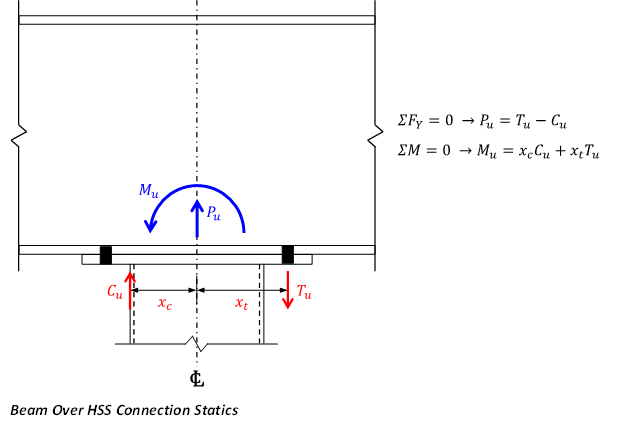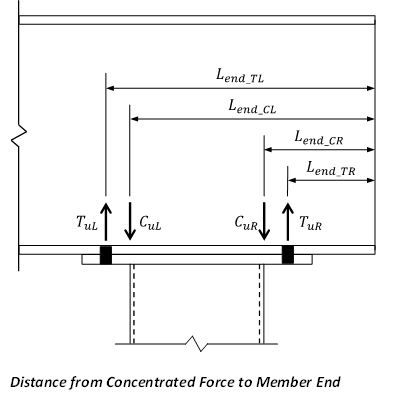A beam over HSS connection consists of a steel cap plate welded to the top of a HSS column section that supports the bottom flange of a W-shape beam. The cap plate is connected to the bottom flange of the beam via four bolts. The connection is intended to resist combined moments and axial load (in the HSS) without the presence of shear.
Beam Over HSS connections are checked per the AISC Steel Design Guide 24 and the AISC 360-22 design specification. In VAConnect, the limit states checked for the Beam Over HSS connection are based on those outline in Example 4.1 of Design Guide 24, which according to the design guide examines all of the limit states for this connection type. Note: As with the entire Design Guide 24, the scope is restricted to nonseismic applications.
The applied moment (Mu) and axial load (Pu) are resolved into two axial loads (Cu & Tu as determined from statics) that are transferred across the beam flange to cap plate interface. Compression forces (Cu) are assumed to act at the face of the HSS whereas tensile forces (Tu) act at the center of the bolts as shown in the image below. Depending on the magnitude and direction of the applied loads (Mu & Pu), the forces that are transferred across the beam flange to cap plate interface may both be in compression or both be in tension. When both forces are compressive, only one wall of the HSS is considered to resist each of the compressive force.

The capacity of the beam side limit states (Web Local Yield, Web Local Crippling, & Web Compression Buckling) depends on the distance from the concentrated force to the end of the member. In some instances when the concentrated forces on both sides of the column are applicable for the limit state, the Unity Value (i.e. demand to capacity ratio) is checked for both concentrated and the worst case is reported.

VAConnect checks the following limit states for Bolted End Plate connections (refer to the program’s detailed reports for specific code references):
VAConnect makes the following design assumptions for Beam Over HSS connections based on AISC Design Guide 24 and AISC Manual provisions: